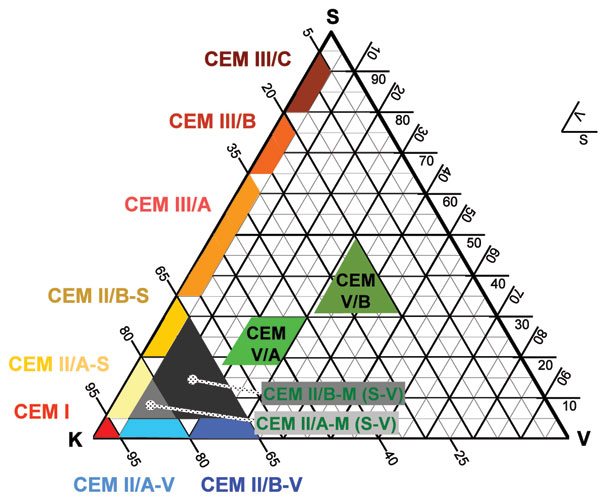Multi-component cements
Given increasingly-stringent environmental legislation, cement producers are actively seeking to reduce their CO2 emissions. One way of lowering such emissions is by reducing the clinker factor in cement. While adding a further component to clinker is nothing new, more recently, cement companies have started to consider a more flexible approach, adding more than one component. This is giving rise to ‘multi-component’ cements. Reiner Härdtl of Heidelberg Technology Center, Germany, explains.

Figure 1: three-phase diagram describing all cement compositions containing
clinker (K), slag (S) and fly ash (V) according to EN 197-1
The pressure to reduce CO2 emissions in cement production will continue. To achieve this task, cement companies have several options to further reduce the clinker factor in cement based on Portland cement clinker:
• further replacement of Portland cements by composite/blended cements
• production and use of composite cements according to existing cement standards with lower clinker content
• establish new cement types with further reduced clinker content which are outside the current cement standards.
Any of these options will cause an increased demand for cementitious materials such as granulated blast furnace slag (GBFS) or fly ash, which are secondary materials from other industrial production processes. Practical experience during recent years shows a high variation in the availability of these materials depending on, for instance, economic and seasonal factors.
To enable a significant reduction of the clinker factor, cement producers need to have a high degree of flexibility in the selection and use of suitable materials. Only in this way it will be possible to offer products of constant quality and performance that satisfy market demands against the background of frequently-changing conditions. This is also a precondition for the competitiveness of cement and concrete with regard to cost-effectiveness and sustainability when compared to other construction materials.

